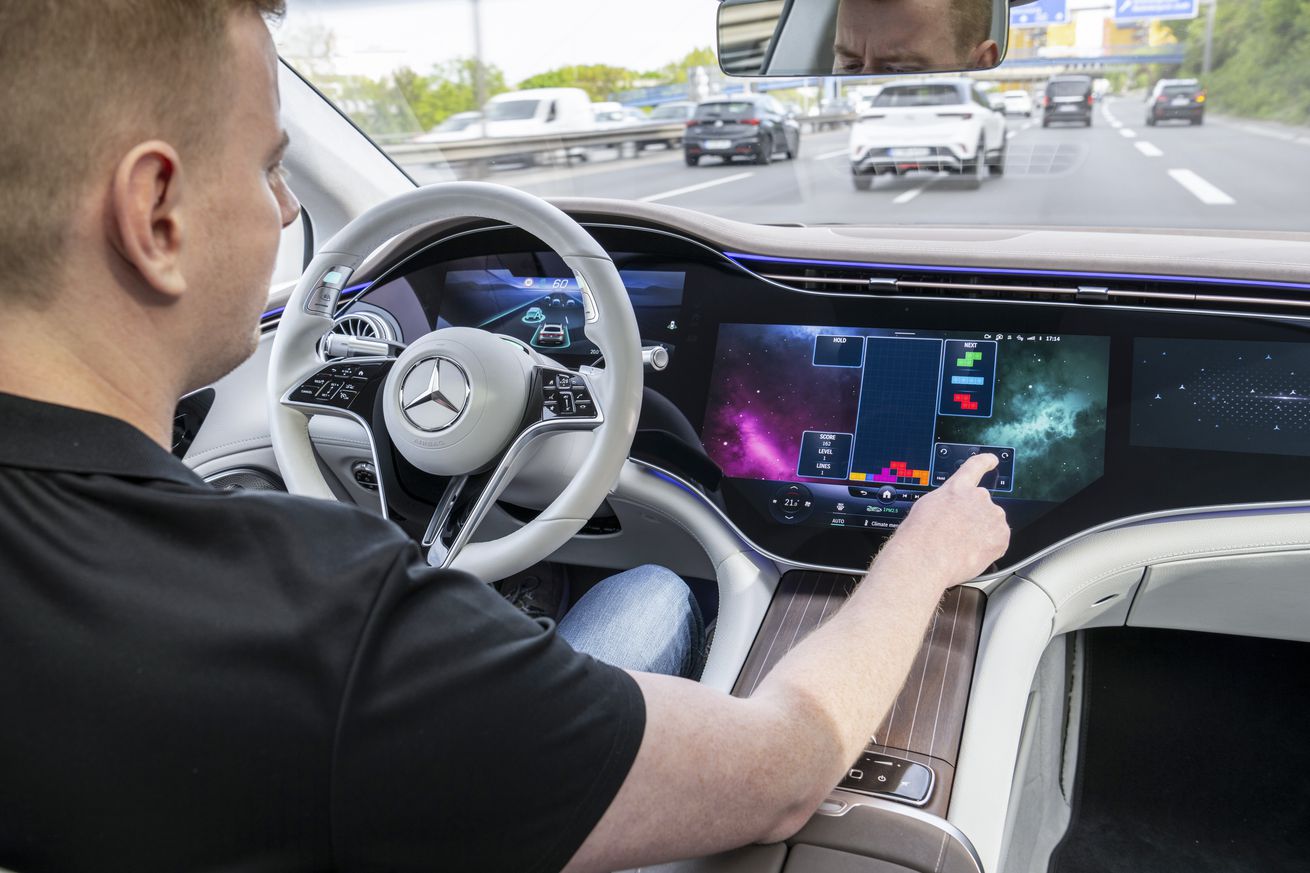
Mercedes-Benz will add Luminar lidar to ‘a broad range’ of vehicles by mid-decade
Mercedes-Benz will add lidar sensors to “a broad range” of its vehicles by the middle of the decade, the company announced at an investor event in California on Wednesday. The laser sensors will help power the German automaker’s next-generation driver-assist system, which allows for hands-free unsupervised driving on certain highways.
The lidar will be supplied by Luminar, a Florida-based company in which Mercedes owns a small investment stake. The German automaker has no plans to increase its stake in Luminar, though the lidar deal is said to be worth several billion dollars. (Mercedes owns less than 1 percent of the company.)
The German automaker has no plans to increase its stake in Luminar
Mercedes is the latest automaker to commit to selling vehicles to customers with rooftop lidar sensors. The laser sensor, a key component in the suites used by most autonomous vehicles, employs near-infrared light to detect the shapes and distances of objects. Combined with camera images and other sensor data, lidar helps vehicles “see” other objects on the road, like cars, pedestrians, and cyclists, all without the help of GPS or a network connection.
The expanded deal will mean expanding Luminar’s manufacturing footprint to include a factory in Asia. The factory will “almost entirely be dedicated to supporting the Mercedes series production program,” Luminar’s spokesperson said.
Increasing production and reducing costs will be key goals in the early stages of the partnership. Lidar can be incredibly expensive — the rooftop versions sold by industry leader Velodyne can cost as much as $75,000 — but Luminar has said it aims to reduce the cost to as little as $500 a unit for advanced driver-assistance system applications and around $1,000 a unit for autonomous applications.
Mercedes will be one of the first automakers to install Luminar’s Iris lidar in its production vehicles. Luminar’s lidar uses unusually long waves of laser light, 1,550 nanometers versus the typical 905nm, which helps spot even small and low-reflective objects — dark-colored cars, animals, a child darting into the street — at a range beyond 250 meters and up to 500 meters for larger, brighter objects.
Mercedes will be one of the first automakers to install Luminar’s Iris lidar in its production vehicles
Mercedes will use Luminar’s lidar to help power its Drive Pilot driver-assist system, a Level 3 driving feature in which the car does all the driving but the driver needs to stand by to take control at a moment’s notice. Unlike a Level 2 system, like GM’s Super Cruise or Tesla’s Autopilot and Full Self-Driving, a Level 3 system purportedly does not need to be supervised by a driver under certain conditions, like on a divided highway. Safety advocates, and even some automakers, have raised concerns about such a system being available on public roads without adequate safeguards or regulatory oversight.
Mercedes and Luminar first announced their partnership in January 2022, with the initial goal of installing Luminar’s lidar in one high-end model. Now, the automaker plans on increasing its lidar supply tenfold over several years in a deal that Luminar says is larger than all of its other OEM partnerships combined.
Since its founding in 2012, Luminar has secured commitments from a number of companies to purchase its lidars, including Volvo, Audi, Toyota Research Institute, Intel’s Mobileye, Daimler trucks, Airbus, and two Chinese companies: automaker SAIC and AV operator Pony.ai. Luminar is rumored to even have a partnership with Tesla, despite Elon Musk’s vocal derision of lidar as a “crutch” and a “fool’s errand.”
Luminar says the Mercedes deal is larger than all of its other OEM partnerships combined
But while Luminar aims to see its lidar atop a fleet of robotaxis someday, Mercedes has no such plans to compete with companies like Waymo and Cruise. Instead, the company is throwing more resources at its Level 3 Drive Pilot system, which it just self-certified as safe for public roads in Nevada.
Unlike a fully autonomous vehicle, a Level 3 system still requires a human driver to stand ready to take control of the vehicle. Drive Pilot doesn’t allow drivers to take a nap or ride in the back seat of the vehicle, for example. In the past, people have abused the lax driver monitoring controls in Tesla’s Autopilot to do both, which has unnerved regulators and spurred safety advocates to call for more robust monitoring.
Mercedes isn’t the only automaker pursuing the technology. In its announcement that it was pivoting away from fully autonomous driving, Ford said it would turn to “internally developed L2+/L3 technology.” Audi, BMW, and Volvo have all said they are working on their own Level 3 systems, with California seen as the next frontier for testing and deployment.

